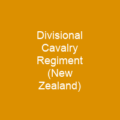Fort Yellowstone: A Historical Gem in the Heart of Yellowstone National Park
Imagine stepping back into a time when the United States Army played a pivotal role in preserving one of America’s most cherished natural wonders—Yellowstone National Park. Fort Yellowstone, established in 1891, was not just a military outpost but a cornerstone in shaping modern park management.
The Birth and Growth of Fort Yellowstone
Back in the late 1800s, when Yellowstone was still under the administration of the Interior Department, the War Department took over. This transition led to the establishment of Camp Sheridan, which later evolved into Fort Yellowstone. The fort’s construction between 1891 and 1913 cost $700,000 and included 60 structures primarily made from sandstone. These buildings were designed by notable architects like Reed and Stem, Robert Reamer, and Captain Hiram M. Chittenden.
Architectural Marvels
The initial wave of construction featured spartan-style buildings with colonial revival elements, while later phases resulted in prominent sandstone structures that define Fort Yellowstone’s architecture today. The U.S. Commissioner’s office, funded by the Lacey Act of 1894, stands out as a unique stone building design. Captain Hiram M. Chittenden led infrastructure projects from 1901, including constructing a reservoir to provide consistent water supply for irrigation, human consumption, and firefighting.
Fort Yellowstone’s Legacy
The army’s legacy at Fort Yellowstone includes backcountry patrols, wildlife protection, law enforcement priorities, and educational programs. These practices laid the groundwork for the National Park Service’s management of national parks. The fort was a National Historic Landmark District with contributing buildings and sites added to the National Register of Historic Places in 2003.
Key Figures and Their Impact
Major John Pitcher, Acting Superintendent from 1901-1907, played a crucial role. He proposed replacing the army with a force of Civilian Guards at Fort Yellowstone due to dysfunctional relationships between the War Department, Corps of Engineers, and Interior Department. The cavalry’s withdrawal in July 1914 marked the beginning of a transition to civilian management.
The Transition to Civilian Control
After six years as Acting Superintendent, Major John Pitcher was replaced by Lieutenant General Samuel B. M. Young in June 1907. The National Park Service officially ended military control of Yellowstone on October 31, 1918. During this period, Fort Yellowstone’s commanding officer was the Acting Superintendent, reporting to both the army and the Interior Secretary.
Notable Cavalry Regiments
Six different cavalry regiments were stationed at Fort Yellowstone during its military administration:
- 1st Cavalry Regiment (1886-1891, 1900-1902, 1911-1914)
- 4th Cavalry Regiment (1898-1899)
- 5th Cavalry Regiment (1909-1910)
- 6th Cavalry Regiment (1892-1897, 1906-1907)
- 8th Cavalry Regiment (1908)
- Yellowstone Park Detachment (1915-1916)
- 7th Cavalry Regiment (1917-1918)
The Last Building: The Chapel
The last building constructed at Fort Yellowstone was the chapel. Army policy did not mandate that army forts provide places of worship, but at the insistence of park superintendent Pitcher and others, Congress appropriated funds for its construction in 1909. The building was finished in January 1913 and used for its first ceremony on September 19, 1914.
Conclusion
Fort Yellowstone’s legacy is a testament to the foresight of those who recognized the importance of preserving America’s natural wonders. From backcountry patrols to wildlife protection, the fort played a crucial role in shaping modern park management practices that continue to this day. As we stand on the grounds where soldiers once patrolled and protected, we are reminded of the enduring impact of Fort Yellowstone.

You want to know more about Fort Yellowstone?
This page is based on the article Fort Yellowstone published in Wikipedia (retrieved on December 4, 2024) and was automatically summarized using artificial intelligence.







